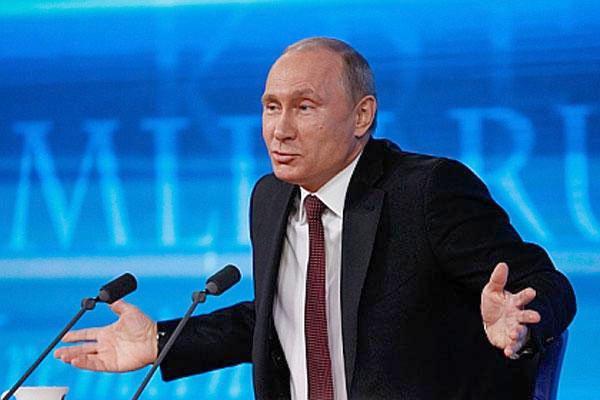Russian Internet is full of information witnessing terrible outcomes of years of Putin’s reign over Russia.
Many compare Putin’s Russia with Russia in time of Yeltsin’s rule.
Here is a comparison of political achievements of these two leaders:
In 1997, at the time full collapse of the Russian economy, Yeltsin brought Russia into the G8, the achievement that was not reached even by China. In 2014 Putin was kicked out of G8.
In 1998 Russia was taken into “Paris Club” of creditors. In 1998 Yeltsin took Russia to the Council of Europe. In 2014 Russia was denied the right to vote in the Council of Europe.
In 1997 Russia was accepted into the program of cooperation in the NATO+1 with a large staff of employees. In April 2014 Russia was kicked out of the program and banned the presence of employees with exception of four people.
In 1994, when Russian oil price was just $11 a barrel, Yeltsin had managed to achieve the convertibility of the ruble. Putin, with the oil price of $140 could not come to the “free” conversion rate. In 2015 West threatens to cancel the convertibility of the ruble.
In 1993 Yeltsin had canceled ‘exit visas’ for Russians. In 2014 Putin banned exit abroad of a large group of officials. Now he is considering the introduction of exit visas for all citizens.
Under Yeltsin, Russia was ahead of the US in oil and gas production. Under Putin, this advantage was lost in 2015.
Putin’s propaganda keeps praising economical achievements of today’s Russia. In reality the situation is far from encouraging.
The markets for cars and computers have collapsed. Demand for and sales of computers in Russia in the first quarter of 2015 fell by 44%, and this decline happened after this indicator already has been reduced by a third in 2014. Hewlett-Packard closed the plant for production of computers in Russia. Jobs and market are lost.
In April 2015 Putin, in a live television broadcast, said, “The Internet has emerged and is developing as a special project of the CIA”, meaning that nothing emanating from the Americans can be trusted.
Microsoft moved its Skype developing office from Moscow to Prague.
Adobe has ceased operations in Russia.
Google closed its technical office in Moscow.
Below are the statistics, which were published by an investigative journalist Victor Shevchuk on the site KAVKAZCENTER.com. Many Russian sites have reprinted this material.
The number of high schools in Russia:
1991 (before the fall of communism) – 69,700
2000 (the end of Yeltsin’s rule) – 68,100
2015 – 44,100
Russia inherited from the Soviet Union almost 70,000 schools. Even in the “hungry” days of Yeltsin only 1600 schools were shut down.
Under Putin, due to the official “rise of the economy”, the number of schools has decreased by a third!
The number of hospitals in Russia:
1990 – 12,800 hospitals
2000 – 10.700 hospitals
2013 – 5,900 hospitals
2015 – 4,400 hospitals (forecast)
Last year, the death rate in hospitals in Russia increased by 3.7%!
The number of hospital beds in 2013 decreased by 35 000; in 2014 by 50,000!
About 20% of the total number of beds had been cut In Moscow alone.
More than 17 thousand small towns in Russia do not have a medical infrastructure at all The number of doctors in Russia in the last year decreased by 90 thousand!
Life expectancy in Russia ranks 123rd in the world.
There is no data for this year yet, but below you can see the official data from the State Statistics Service of the Russian Federation for 2014.
(We are using here an average ruble–dollar rate of the time at the beginning of 2014. Now the value of the ruble is half as much as then.)
13.4% of Russians live in “extreme poverty”. Their income is below 4,900 rubles (160$) per month (Most of the Russian food and consumer goods prices are equal to American ones or higher).
27.8% of Russians live in “poverty”. Their incomes are from 4,900 to 7,400 rubles ($160-$247).
38.8% of Russians are “poor”. Their incomes are from 7,400 to 17,000 rubles ($247-$567).
10.9% of Russians are “above poor”. Their monthly incomes are from 17,000 to 25,000 rubles ($567-$833).
7.3% of Russians have “average”: from 25,000 to 50,000 rubles per month ($833-$1,666).
1.1% of Russians are “well to do”. They receive from 50,000 to 75,000 rubles per month ($1,666-$2,500).
0.7% of “rich” have income in excess of 75,000 rubles per month ($2,500).
In other words, 90.9% of Russians are living near the poverty line.
During the first half of 2015:
Extraction of raw materials (except gas) fell by 7%.
Production of:
All kinds of vehicles fell by 22.2%.
Machinery and equipment by 14.9%.
Metallurgy by 9.3%.
Textiles, clothing by 16.5%.
Shoes by 17.3%.
Buckwheat by 40%.
Sugar by 36.2%.
Cement by 15.1%.
Concrete, plaster and cement constructions by 17.8%.
Bricks by 5.6%.
Refrigerators by 35.3%.
Washing machines by 19.9%.
19.3% less farm area was sown than during the first half of 2014.
August 6, 2015, 16:01 web site REGNUM.ru reported (http://regnum.ru/news/society/1949861.html) that Russia showed increase in infant mortality. Eduard Gavrilov, the First Deputy Chairman of the Commission for Health, Physical Education and Promotion of Healthy Lifestyles of Public Chamber of Russia has stated in his interview to the site that this growth in mortality is even higher than during the 2008 economic crisis.
For the first six months of 2015, total mortality rate in Russia rose by 2.8%, which amounts to almost 27,000 lives.
Increase in the number of deaths coincides with reduction with the number of births. A little more than 926,800 children were born in January – June 2015, which is 5,700 less than in the same period of 2014.


